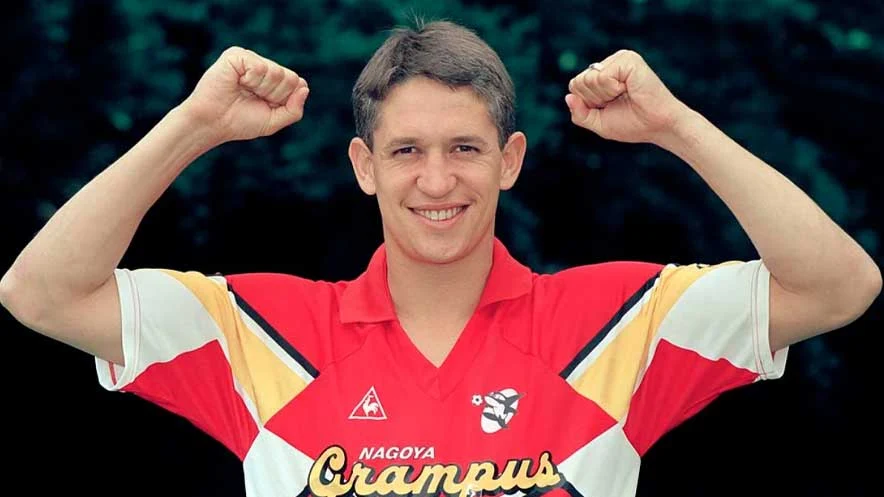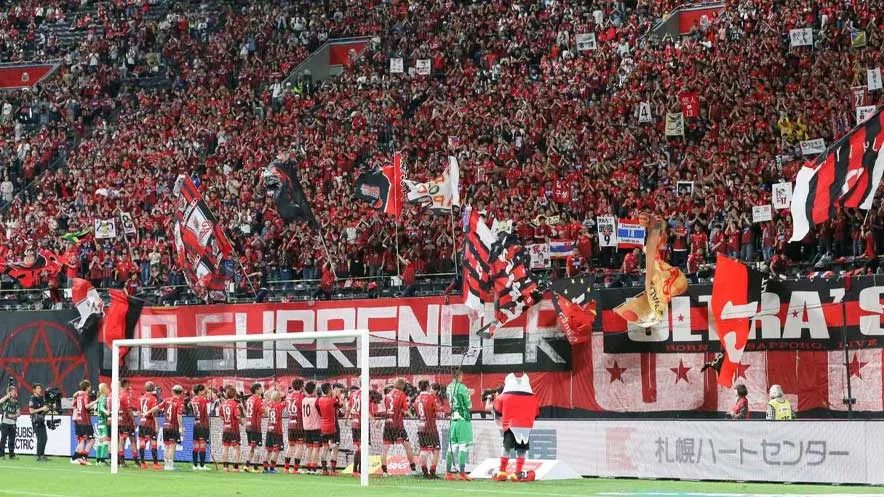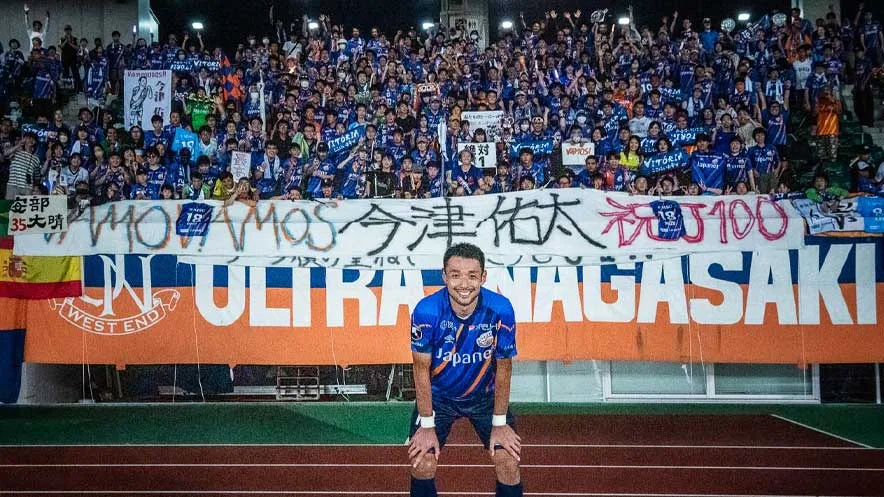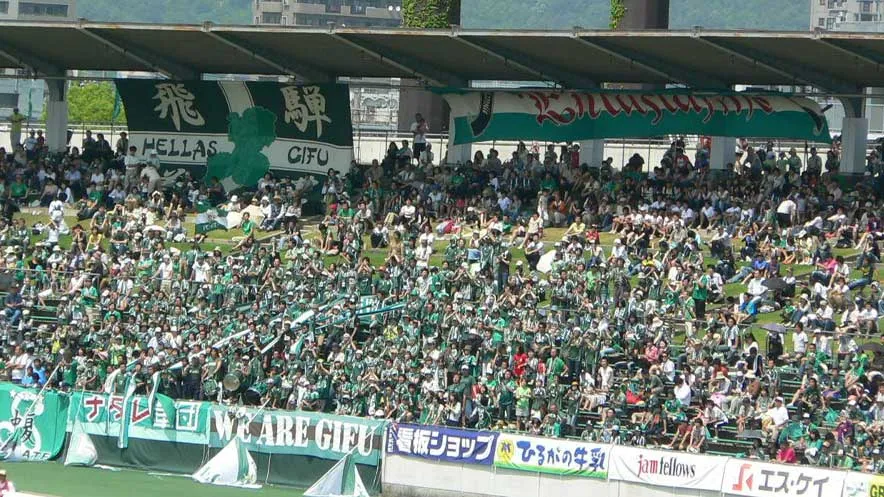Discover the exciting world of J.League in Football Manager 2024. Dive deep into its history, teams, and uncover the best saves to embark on.
Discover the exciting world of J.League in Football Manager 2024. Dive deep
into its history, teams, and uncover the best saves to embark on a unique
managing journey.
The realm of football management games has taken a giant leap forward with the anticipated inclusion of the J.League in Football Manager 2024. Gone are the days of envying the talent and excitement that Japanese football brings without being able to engage with it on FM. Now, with an updated game interface and authenticity, football management enthusiasts can venture into the heart of Japan.
The J.League Inclusion: What To Expect
The inclusion of the Meiji Yasuda Insurance Ltd J1, J2, and J3 leagues offers an immersive experience for players. For the first time, Football Manager will provide Japanese as an in-game language option. Couple this with the official logos, kits, and player photos from the 2023 J.League season, and FM24 becomes the epitome of gaming authenticity.
Making its long-awaited debut 🇯🇵
— Football Manager (@FootballManager) September 21, 2023
Welcome to #FM24, @J_League 🤝 pic.twitter.com/6XOQxKyNqj
Get a head start with 28% off on your FM24 pre-order.
Diving Deeper into the J.League Structure
Navigating the intricacies of the J.League can greatly enhance your FM24 experience. From its unique player registration rules to its elite continental competitions, understanding these nuances is essential.
Player Registration in the J.League
J.League clubs are tasked with the challenge of adhering to a quota system when registering foreign players:
• Foreign Player Quota: Clubs can register up to five foreign players. However, among these, one slot is reserved exclusively for a player from an AFC (Asian Football Confederation) nation. This encourages the inflow of Asian talents while ensuring a balanced mix of global skills.
• Focus on Homegrown Talent: This quota, while allowing international expertise, ensures ample opportunities for Japanese players. Clubs, therefore, must strategize effectively to maintain a balance of local and international talents.
• Economic Balance: Foreign signings often demand higher transfer fees and wages. The quota, while ensuring a diverse skill set, ensures clubs maintain economic stability.
READ ALSO: Football Manager 2024 System Requirements
Success in the domestic league often translates to representation in Asia's elite football competitions:
• Kingpins of the J.League: When discussing dominance, Kashima Antlers take the spotlight. With a record number of J.League titles under their belt, they have undoubtedly established themselves as the most successful club in Japanese football history.
• Cradle of Talent: While many clubs have contributed to the growth of Japanese football talents, Gamba Osaka has a rich history of nurturing and producing top-notch Japanese players who have gone on to make a mark internationally.
Don't miss out on our exclusive 28% discount offer for FM24 pre-orders in partnership with CDkeys. Secure your copy and embark on the most realistic football management journey yet!
J.League's Position in Continental Competitions
Success in the domestic league often translates to representation in Asia's elite football competitions:
• AFC Champions League: The pinnacle of club
football in Asia. J.League clubs that perform exceptionally well domestically
secure a spot in this prestigious tournament, competing against Asia's
finest.
Japanese clubs have made their mark in the AFC Champions League, with several notable triumphs. Urawa Red Diamonds have secured the title twice, first in 2007 against Sepahan of Iran and again in 2017 against Al-Hilal of Saudi Arabia. Gamba Osaka claimed victory in 2008 by besting Adelaide United, while Kashima Antlers clinched their maiden title in 2018 against Persepolis of Iran. These accomplishments underscore the prowess of Japanese football on the continental stage.
READ ALSO: Football Manager 2024 Beta | FM24: Your Exclusive Early Access Guide
The rich tapestry of J.League's history spans decades, blending deep-rooted traditions with modern footballing flair. Let's delve into this enthralling journey of Japanese football and the evolution of the J. League.
• Pre-J.League Era: Before the inception of the professional league, Japanese football was primarily an amateur sport. The Japan Soccer League (JSL), founded in 1965, was the top-tier competition but lacked professional administration and failed to draw significant public interest.
• Birth of the J.League: Recognising the need for a more structured and professional approach, the J.League was officially launched in 1993. The foundation of the league was seen as a significant step to reinvigorate interest in football in Japan and provide a platform for local talent to flourish.
• First Champions: Verdy Kawasaki (now known as Tokyo Verdy) clinched the title in the inaugural 1993 season, setting the benchmark for other clubs in the years to come.
• Unique Season Structure: In its early years, the J.League adopted a split-season system, inspired by Latin American leagues. There were two half-seasons, and winners of each would face off in a championship decider.
• Rapid Expansion: The initial league of 10 teams rapidly expanded to include two divisions by 1999, with a third division added in 2014.
The Storied Past of J.League: From Origins to Global Allure
The rich tapestry of J.League's history spans decades, blending deep-rooted traditions with modern footballing flair. Let's delve into this enthralling journey of Japanese football and the evolution of the J. League.
Historical Foundations
• Pre-J.League Era: Before the inception of the professional league, Japanese football was primarily an amateur sport. The Japan Soccer League (JSL), founded in 1965, was the top-tier competition but lacked professional administration and failed to draw significant public interest.
• Birth of the J.League: Recognising the need for a more structured and professional approach, the J.League was officially launched in 1993. The foundation of the league was seen as a significant step to reinvigorate interest in football in Japan and provide a platform for local talent to flourish.
Notable Milestones and Trivia
• First Champions: Verdy Kawasaki (now known as Tokyo Verdy) clinched the title in the inaugural 1993 season, setting the benchmark for other clubs in the years to come.
• Unique Season Structure: In its early years, the J.League adopted a split-season system, inspired by Latin American leagues. There were two half-seasons, and winners of each would face off in a championship decider.
• Rapid Expansion: The initial league of 10 teams rapidly expanded to include two divisions by 1999, with a third division added in 2014.
• Kingpins of the J.League: When discussing dominance, Kashima Antlers take the spotlight. With a record number of J.League titles under their belt, they have undoubtedly established themselves as the most successful club in Japanese football history.
• Cradle of Talent: While many clubs have contributed to the growth of Japanese football talents, Gamba Osaka has a rich history of nurturing and producing top-notch Japanese players who have gone on to make a mark internationally.
READ ALSO: Football Manager 2024 Mobile and Netflix: A Match Made in Heaven or a Dangerous Gamble?
The J.League has witnessed several global footballing stars grace its pitches, bringing both talent and international attention:
• Gary Lineker: The former English striker, known for his prowess in front of goal, was one of the first international stars to play in the J.League, joining Nagoya Grampus Eight in 1993.
• Zico: The Brazilian legend, renowned as the 'White Pele', not only played for Kashima Antlers but also took on managerial roles, significantly influencing Japanese football's trajectory.
• Diego Forlán: The Uruguayan forward, known for his stints in Europe, played for Cerezo Osaka, adding a dash of South American flair to the league.
• Andrés Iniesta: The Spanish maestro, famed for his Barcelona career, joined Vissel Kobe in 2018, showcasing that the J.League can attract world-class talent even in the twilight of their careers.
With the J.League's inclusion in Football Manager 2024, a whole new dimension of football management awaits. Whether you're a seasoned manager or a newbie, the J.League promises a rollercoaster of emotions, challenges, and rewards. So, lace up those managerial boots and embark on a journey through the enchanting world of Japanese football.
Galácticos of the East: International Stars in J.League
The J.League has witnessed several global footballing stars grace its pitches, bringing both talent and international attention:
• Gary Lineker: The former English striker, known for his prowess in front of goal, was one of the first international stars to play in the J.League, joining Nagoya Grampus Eight in 1993.
• Zico: The Brazilian legend, renowned as the 'White Pele', not only played for Kashima Antlers but also took on managerial roles, significantly influencing Japanese football's trajectory.
• Diego Forlán: The Uruguayan forward, known for his stints in Europe, played for Cerezo Osaka, adding a dash of South American flair to the league.
• Andrés Iniesta: The Spanish maestro, famed for his Barcelona career, joined Vissel Kobe in 2018, showcasing that the J.League can attract world-class talent even in the twilight of their careers.
Journey Through FM24 with These J.League Clubs
Hokkaido Consadole Sapporo
Located on the northernmost island of Japan, Hokkaido, this club offers a
unique challenge. While they've showcased sparks of brilliance, the ultimate
test is transforming them into the J1's powerhouse. Can you navigate the icy
conditions of Hokkaido and melt away the competition?
Kawasaki Frontale
Hailing from Kawasaki, they have a rich history of consistency in the J1
League. With a passionate fan base and a proven track record, your challenge
is to uphold this legacy while making a significant impact in the AFC
Champions League. The city's industrious nature reflects in the club's work
ethic. Can you fuel their ambition to become Asia's best?
V-Varen Nagasaki (J2)
Representing the historic city of Nagasaki, this club has experienced the
rollercoaster of emotions from J1 highs to J2 challenges. With a resilient
spirit and a city that's risen from adversity, can you channel this energy to
lead them back to the top echelons of Japanese football?
FC Gifu (J3)
Nestled in the heartland of Japan, Gifu city is known for its beautiful
landscapes and ancient castles. The club, FC Gifu, mirrors this serenity, but
beneath lies the hunger for success. Starting in J3, your task is monumental:
to guide this team through the tiers and onto the summit of Japanese
football.
Conclusion
With the J.League's inclusion in Football Manager 2024, a whole new dimension of football management awaits. Whether you're a seasoned manager or a newbie, the J.League promises a rollercoaster of emotions, challenges, and rewards. So, lace up those managerial boots and embark on a journey through the enchanting world of Japanese football.





















